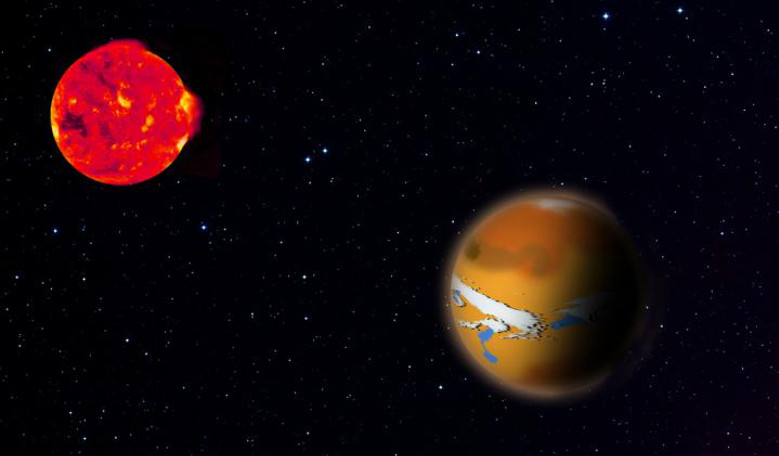Our current hopes of detecting life on far-flung exoworlds is reliant on our ability to identify chemical compounds that would be produced by living organisms - a task that is already considered substantially hard to achieve. Now, new simulations into wind patterns suggests that the task could become a whole lot harder.
Looking for life on other planets was never going to be easy with current technology and the best example we have of what an alien atmosphere might look like is based on our own. Ozone for example (a gas made up of three oxygen atoms; O3) is one such molecule that could be used as a biogenic tracer of life that indicates the presence of oxygen-producing plants or bacteria.
On Earth, ozone is widely spread across the planet and it plays an important role by keeping harmful ultraviolet (UV) rays at bay. But how would ozone on say Proxima b – our nearest exoplanet neighbour – look to us if we observed it with a telescope.
Proxima b and the most promising of the TRAPPIST-1 family of planets, TRAPPIST-1d, orbit their host stars, both of which are red dwarfs, in 25 days or fewer. One consequence of this, is that both planets have one side that permanently faces their star, while the other side permanently faces away.
So what effect, if any, would this have for scientists trying to spot the potential signs of life on a planet similar to this? It turns out, quite a significant one. By studying how unusual air flow patterns could hide atmospheric components from telescopic observations, a team of researchers led by Ludmila Carone of the Max Planck Institute for Astronomy in Germany found that this day-night divide can have a considerable effect on the distribution of ozone across the atmosphere.
For planets such as Proxmia b, the major air flow may lead from the poles to the equator, and if this occurs then it would systematically trap the ozone in the equatorial region. This in turn could have a knock-on effect for the habitability of the planet.
"Absence of traces of ozone in future observations does not have to mean there is no oxygen at all. It might be found in different places than on Earth, or it might be very well hidden,” explains Carone. "We all knew from the beginning that the hunt for alien life will be a challenge, as it turns out, we are only just scratching the surface of how difficult it really will be."
Although both planets orbit reddish stars that emit very little harmful UV light to begin with, they can be prone to violent outbursts of harmful radiation including ultraviolet. Therefore an unusual atmospheric structure might not offer sufficient protection from any incendiary emission.
However, there is still hope. "In principle, an exoplanet with an ozone layer that covers only the equatorial region may still be habitable," Carone explains. And with the combination of improved data from telescopes such as the James Webb Space Telescope when it is launched in 2019 coupled with advances in computer modelling, significant progress in this exciting field should herald some truly outstanding results.











